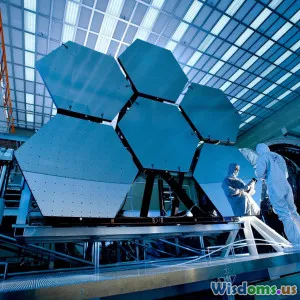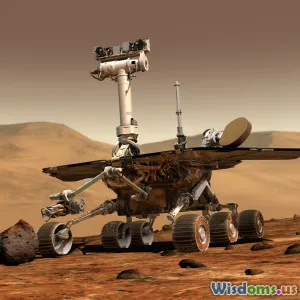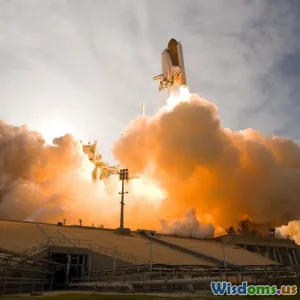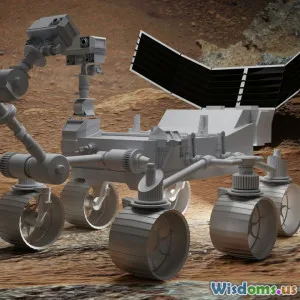
Inside Curiosity Rover’s Innovative Survival on Harsh Mars
15 min read Explore how NASA's Curiosity Rover thrives on Mars using groundbreaking technology and engineering solutions to withstand extreme planetary conditions. (0 Reviews)
Inside Curiosity Rover’s Innovative Survival on Harsh Mars
Beneath the vivid red dust of Gale Crater—and more than 225 million kilometers from its creators on Earth—the Curiosity Rover wakes each Martian morning as a robot outpost, living its loneliest hours in the name of scientific breakthrough. Surviving this alien world isn’t just about collecting data; it’s an epic feat of endurance, creativity, and engineering prowess. Equip yourself with fascinating details, technological insights, and the ingenuity that keeps Curiosity alive on Mars.
Forging the Rover: Built for Extremes

Building a robot for Mars is like building a car that must cross a continent, all by itself, without a repair shop in sight. The Curiosity Rover’s engineering is the product of thousands of test iterations by NASA’s rover scientists. Its chassis takes heavy cues from high-endurance vehicles, including a robust aluminum body and titanium parts designed to resist both Martian cold and radiation.
Key Systems that Enable Survival:
- Redundant Computing: Curiosity has two main computers (A and B sides). If one fails—the other takes over instantly, ensuring no single malfunction can end the mission.
- Radiation-Hardened Electronics: All critical systems are encased in special shielding to survive cosmic rays, which are far deadlier on Mars due to its lack of protective atmosphere.
- Thermal Insulation: The rover’s electronics are wrapped in versatile insulation, keeping them within operational limits as external temperatures swing from -128°C at night to 20°C in the day.
As a testament to their design, Curiosity’s wheel-driven chassis has endured more than double its expected operational life, weathering six Martian winters and traversing over 30 kilometers (as of 2024).
Staying Powered: The Radioisotope Lifeline

Unlike solar-powered predecessors, Curiosity is equipped with an energy solution designed to last—its multi-mission radioisotope thermoelectric generator (RTG). Housing barely two handfuls of plutonium-238, the RTG makes Curiosity independent of fluctuating Martian sunlight.
Why RTG Matters:
- Overcoming Weather: Dust storms can shroud Mars for months, as they did with the Opportunity rover in 2018. Curiosity’s RTG makes it blind to clouds or shadow.
- Night Operations: Whereas solar panels become dead weight after sundown, the RTG offers a continuous trickle of roughly 110 watts—enough to run heaters, science instruments, and communications round the clock.
- Unprecedented Longevity: The RTG is projected to enable activity for more than 14 years—well beyond Curiosity’s original two-year prime mission.
Fact in Focus: RTG technology also powers the Mars Perseverance rover and the Voyager spacecraft that are now beyond our solar system. On Curiosity, it means the difference between abandonment in a dust storm and having the stamina for a marathon research mission.
The Art of Autonomous Navigation
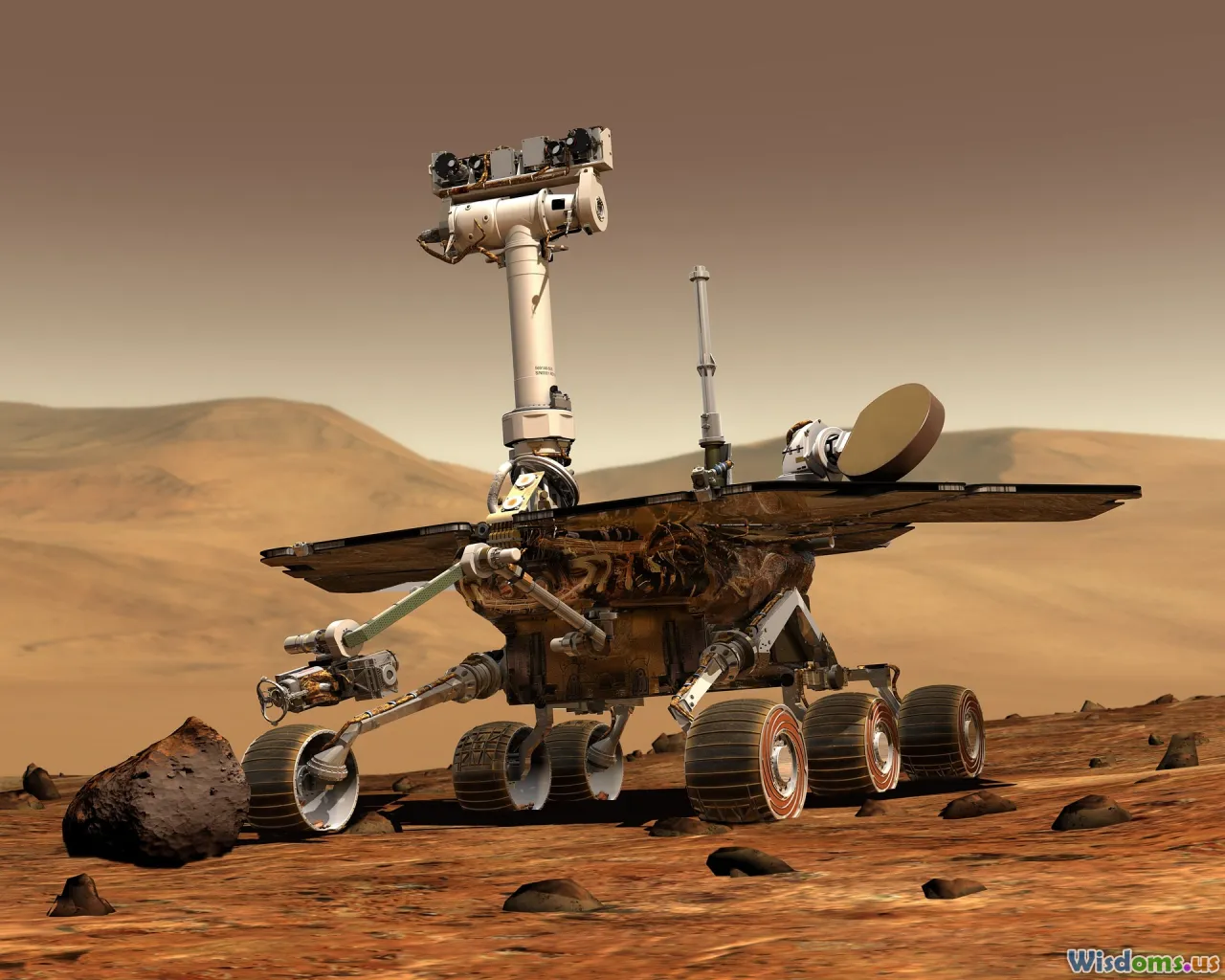
Atmospheric entry on Mars is only the beginning; Curiosity must constantly drive, turn, and maneuver through boulders, dunes, and steep crater slopes. Unlike Earth-based rovers of the past, Curiosity is equipped with software for real-time hazard detection and limited autonomous navigation.
Autonomous Navigation Detail:
- Science Camera Suite: 17 cameras—including Hazcams, Navcams, and the context Mastcam—capture 3D terrain maps, feeding data to onboard image processors.
- Rover Brain: Curiosity’s computers analyze images for obstacles and decide, for example, whether to cross a rocky patch or reroute.
- Human-Robot Teamwork: Each Martian morning, science teams on Earth uplink drive sequences. Curiosity then makes critical last-minute driving decisions if it detects unseen hazards, protecting itself from entrapment—a feat that prevented disaster during the infamous dune crossings.
This symbiosis of pre-planned pathfinding and split-second autonomy allowed Curiosity to ascend the treacherous slopes of Mount Sharp—something never previously accomplished by any robot on Mars.
Weathering the Martian Elements: Dust, Cold, and Radiation
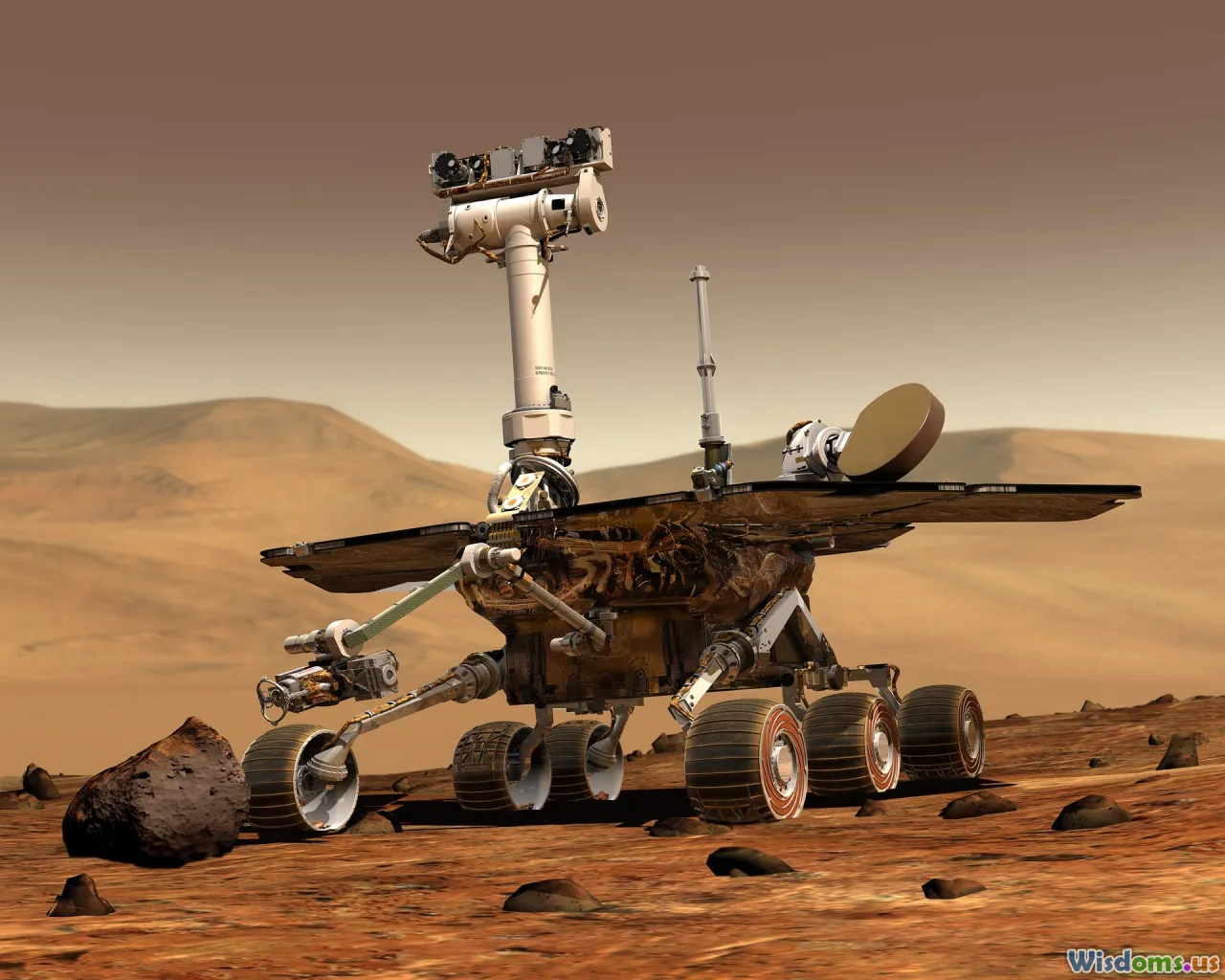
Mars might look serene in satellite images, but its weather is perilous. The average surface pressure is less than 1% of Earth’s, causing boiling temperatures by day and bone-chilling frost at night. Meanwhile, pervasive dust storms can turn day into perpetual twilight, and cosmic rays shower surface electronics relentlessly.
Survival Strategies:
- Self-Cleaning Design: Every moving part on Curiosity is hermetically sealed or boasts self-cleaning properties. For instance, the wheel treads ingeniously disperse dust buildup with each rotation.
- Thermal “Hibernation” Mode: Heaters prioritize essential components overnight. At extreme lows, nonessential systems power down—similar to hibernation in animals—while critical parts stay just above freezing.
- Material Mastery: Solar cells were abandoned in favor of the RTG, sidestepping the common fate of solar rovers like Spirit and Opportunity, whose panels eventually became caked in dust.
The Mars Science Laboratory (MSL) team closely monitors environmental data beamed back by Curiosity’s REMS weather station, gleaning not only survival parameters but also new warnings for future missions.
Mastering Communication: Staying Connected with Earth
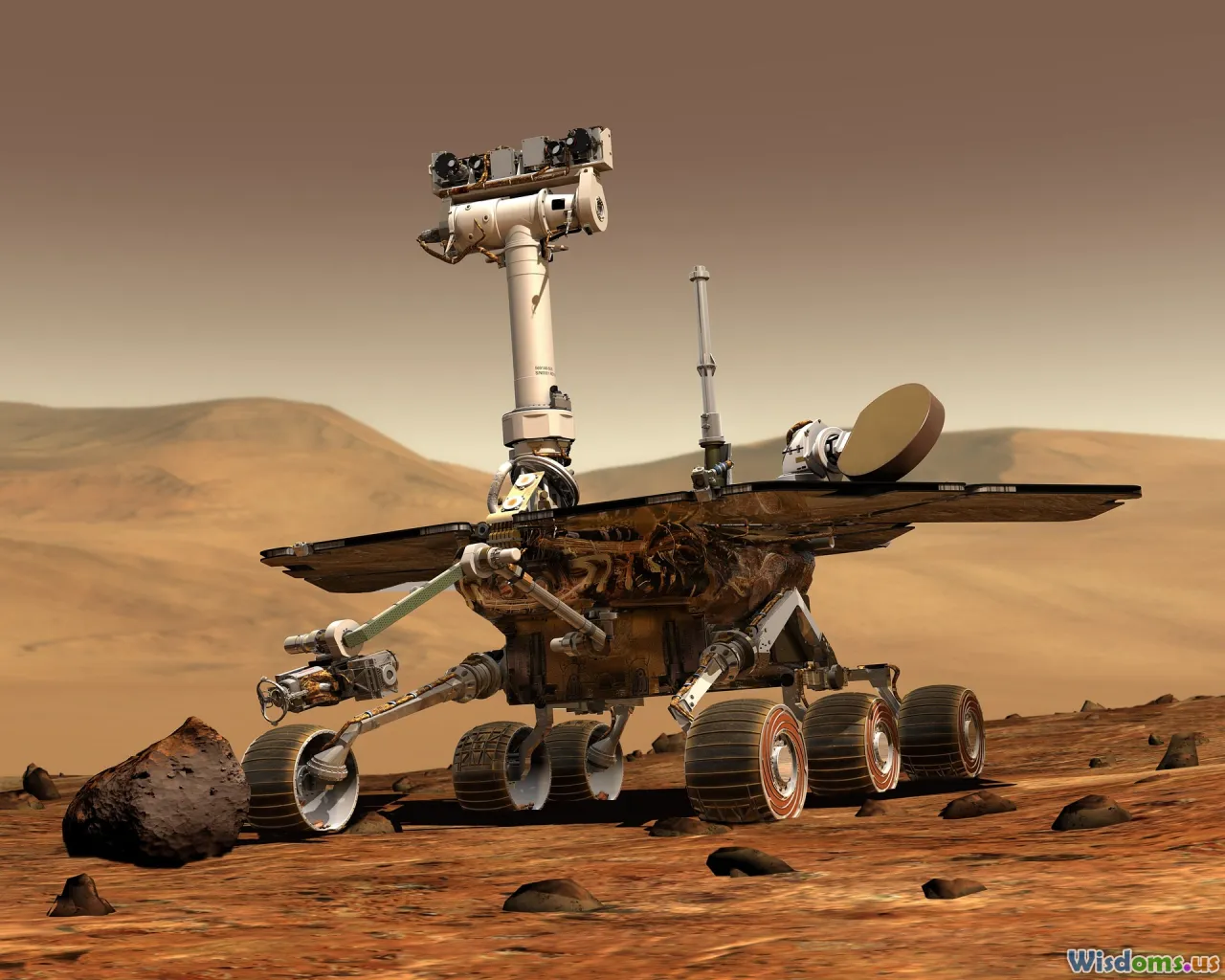
Communicating across millions of kilometers is a logistical wonder. With signal delays between 4 to 24 minutes one way, Curiosity depends on pre-programmed sequences and smart redundancy for critical messaging.
Communication Architectures:
- High-Gain Antenna: Curiosity beams data directly to NASA’s Deep Space Network—though this is energy-intensive and relatively slow.
- UHF Relay via Orbiters: The Mars Reconnaissance Orbiter (MRO) and other satellites act as data ferries, vastly increasing downlink speed and reliability.
- Data Prioritization: Both science data and health updates are prioritized by urgency through onboard logic, ensuring vital status reports always have a pathway home.
The result? Humans aren’t fixing glitches in real time. Curiosity must interpret trouble and respond—sometimes with prescribed “safe mode” processes—long before Earth even hears there’s a problem.
Performing Science without Human Hands

Unraveling Mars’ secrets requires laboratory finesse; yet Curiosity performs all experiments robotically. Its iconic arm boasts a suite of scientific tools, some of the most sophisticated ever sent to another planet.
How Curiosity Operates its Lab:
- Sample Acquisition: Its drill collects powdered rocks, passing material through a series of sieves and chambers.
- Sample Analysis at Mars (SAM): Here, gases are heated and ionized, then tested for organics, water, and atmospheric chemicals, replicating a human chemist’s precision.
- CheMin X-ray Diffraction: Determines the crystallography of minerals, a science impossible to accomplish with remote cameras alone.
One case in point: Curiosity’s identification of ancient organic molecules in mudstone—a clue to potential past habitability—would have required weeks in an Earth-bound laboratory, but was executed in the harsh Martian wild.
Staying Smart: Fault Detection and Onboard Recovery

Mars is the definition of remote, where help doesn’t arrive with the next rocket. To survive, Curiosity leverages elaborate error-detection and resilience routines independent of constant ground control supervision.
Strategies for Autonomy:
- Automated Watchdogs: The rover monitors internal systems for aberrant voltages, motor resistance, and software unresponsiveness.
- Recovery Sequences: Upon detecting trouble, such as a jammed wheel or sensor error, Curiosity launches pre-tested troubleshooting scripts, disabling affected subsystems and rerouting commands.
- Safe Mode: In severe cases, Curiosity halts ongoing science, enters a low-power “safe mode,” and attempts to phone home for instructions—much like putting a PC into BIOS after a critical error.
Early in its mission, a corrupted memory file forced a computer-side swap mid-operations. Curiosity recovered within 48 hours—a showcase for its built-in recovery paths that have prevented mission loss on several occasions.
Learning from Every Mile: Adapting for the Long Haul

Every wheel rotation is another lesson for future rovers. Curiosity’s continued journey is a marathon of trial, adjustment, and learning.
Continuous Adaptation:
- Wheel Damage Management: Sharp Martian rocks have punctured Curiosity’s wheels, prompting mission engineers to slow rhythms, change driving routes, and develop diagnostic onboard scans to monitor tread health.
- Software Upgrades: Periodically, Curiosity downloads new code—from hazard avoidance to more efficient data packing—extending its scientific utility well beyond initial projections.
- Science Prioritization: As some instruments showed wear, teams shifted operations to maximize remaining functionality, ensuring landmark discoveries (such as methane spikes in the atmosphere) remained possible years after launch.
Insights from Curiosity’s saga directly shaped Perseverance’s enhanced suspension, improved drilling stability, and even sample caching designs—turning every hardship into a blueprint for the next generation.
Cultivating Resilience: Lessons for Future Exploration
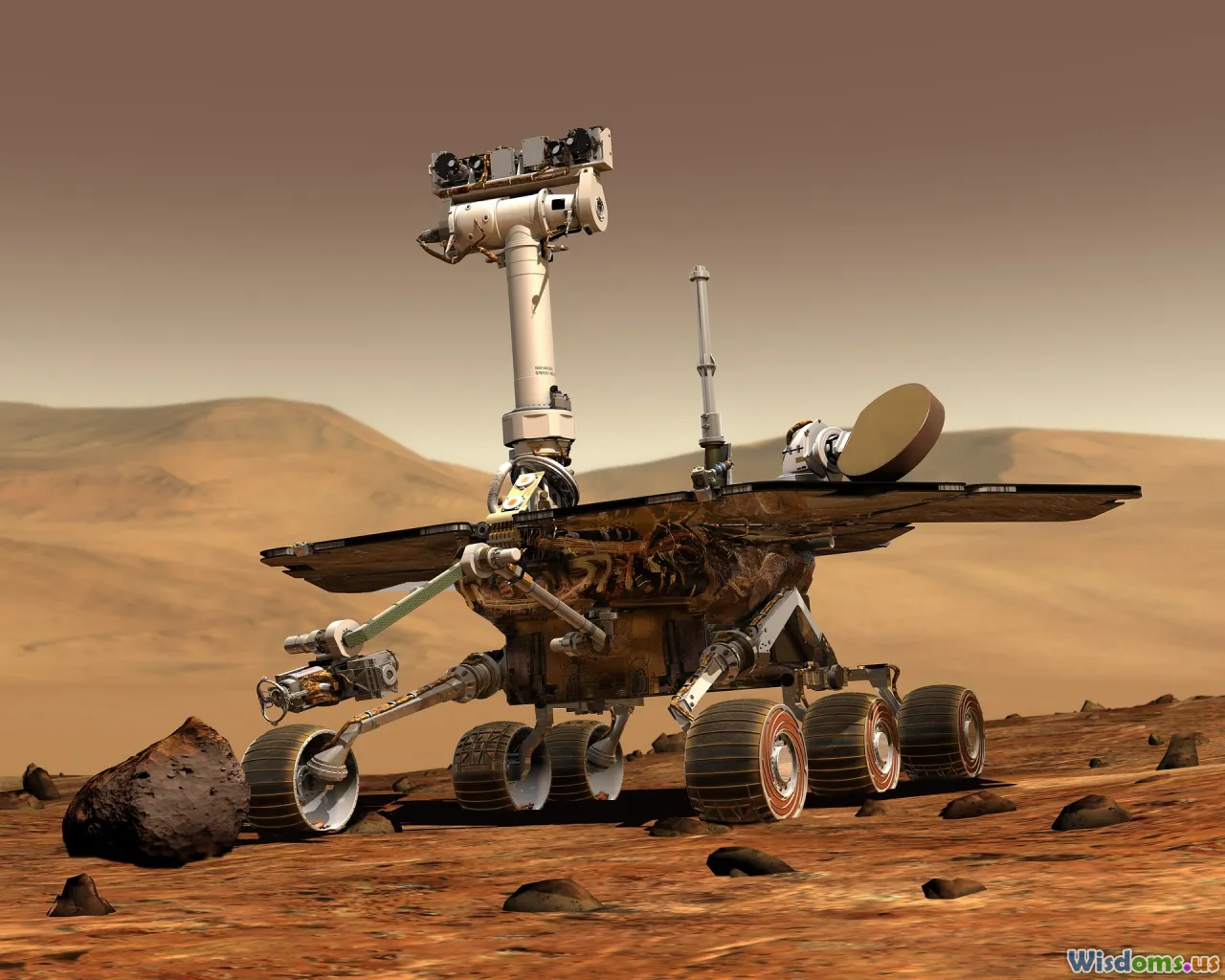
Though Curiosity was born of cutting-edge 2010’s science, its true legacy is the resilience it cultivates across planetary exploration. Each year, it accumulates not just dust, but valuable engineering, scientific, and operational insights.
Applications Beyond Mars:
- Design for Redundancy: From microprocessors to motor controllers, future missions build even more fault tolerance into hardware, inspired by Curiosity’s life-extending design.
- Standby Innovation: Adaptive autonomy and real-time diagnostics, initiated with Curiosity, are spreading through deep-space mission protocols, from Europa Clipper to lunar landers.
- Human Exploration Lessons: Every hour Curiosity survives and reports informs life support, surface operations, and safety procedures for eventual human explorers—focusing on vital issues like dust contamination and energy management.
With each hard-won day, the rover proves the blueprint of resilience, transforming hypothetical designs into daily survival.
For all the world’s top-tier laboratories and assembly rooms, nothing tests technology like the far edge of the solar system. Curiosity doggedly roves on—a witness, a scientist, a survivor. Its enduring success inspires new missions and stokes hope for humanity’s eventual footprints among the rust-hued dunes and rocky cliffs of the Red Planet. In every proud wheel mark stretching across Gale Crater, Curiosity charts not just Martian geology but the boundaries of human innovation and perseverance.
Rate the Post
User Reviews
Popular Posts










